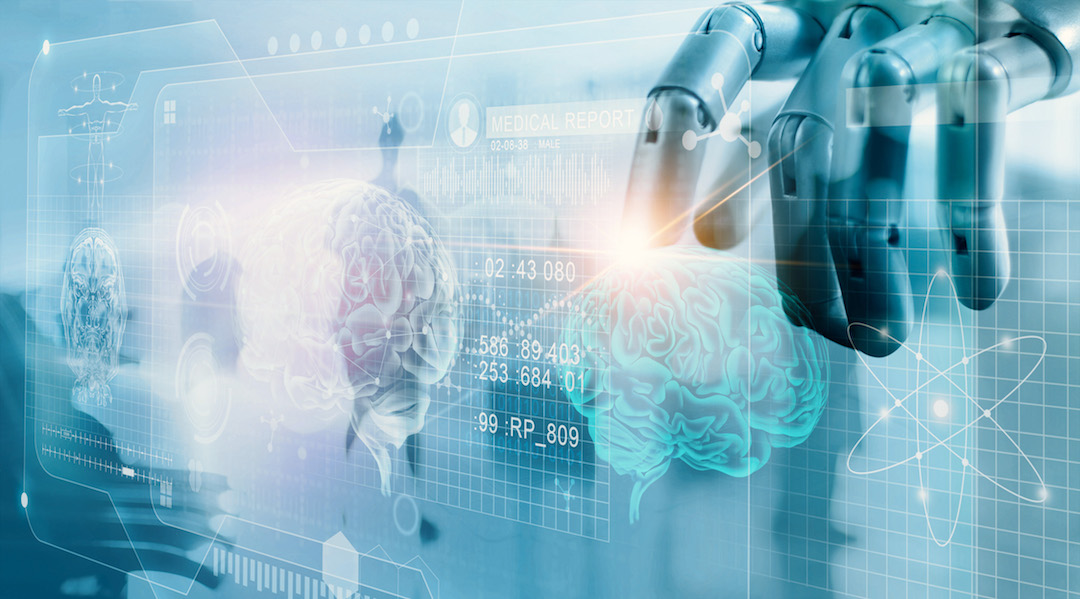TECH NEWS | AI to add 9.5% to global GDP growth by 2030
Survey showed that AI will have a huge and long-lasting positive impact on GDP growth across regions.

Robot checking brain testing result with computer interface, futuristic human brain analysis, innovative technology in science and medicine concept
This artcile was originally posted at altindex.com.
The global AI industry continues surging with no signs of stopping any time soon. In 2024, the entire sector is expected to reach 315 million users and a $184 billion value, 35% more than last year. The impressive double-digit growth will continue in the following years, helping AI market not only to hit record value but also to boost global GDP growth.
According to data presented by AltIndex.com, artificial intelligence could add 9.5% to global GDP by 2030, nearly five times more than this year.
North America to See the Biggest Impact of AI on Economic Growth
Although the rise of artificial intelligence has created a digital divide between countries with strong AI capabilities and those without, raised concerns about job losses, security and data privacy, the AI industry’s growth is poised to be a significant driver of global GDP by improving productivity, streamlining business processes, reducing costs, and creating new products and services.
The Statista Market Insights survey showed three scenarios of AI’s impact on global GDP. In a moderate scenario, the cumulative impact of AI-driven technologies and innovations could increase global economic output by 9.5% by the end of a decade, or five times more than this year. In an optimistic scenario, AI’s impact will be 2% higher and rise from 2.44% in 2024 to 11.41% in 2030. Even the conservative scenario predicts AI will significantly boost the global economy. In this scenario, the cumulative impact of AI-driven technologies and innovations will increase global economic output by 1.76% in 2024 and then jump to 8.81% in the next six years.
The Statista survey showed that AI will have a huge and long-lasting positive impact on GDP growth across regions. For instance, the moderate scenario shows artificial intelligence could add 6.7% to Asian GDP growth by 2030, or five times more than this year. Europe will see a similar increase, with the cumulative impact of AI-driven technologies and innovations increasing the region`s global economic output by 9.7% by 2030. In North America, AI`s impact on GDP growth will be even bigger, increasing from 2.2% to 10.5% in the next six years.
AI Industry to Hit Almost $830 Billion Value and 730 Million Users by the End of a Decade
AI’s significant contribution to global GDP growth is unsurprising, considering the fantastic market projections by the end of a decade. According to Statista Market Insights, the entire market is expected to increase fourfold and hit almost $830 billion value by 2030.
Machine learning will remain the market’s largest and highest-grossing segment, forecasted to hit a $503 billion value by the end of a decade, or six times more than this year. Natural language processing and AI robotics follow with fivefold and threefold increases and $156 billion and $64 billion valuations by 2030, respectively.
Besides impressive revenue growth across all market segments, the AI market will also reach more users than ever. With an estimated 70 million new users adopting the technology each year, the AI sector could potentially hit almost 730 million users by the end of the decade, up from 315 million this year.
This artcile was originally posted at altindex.com.
WATCH: TECHSABADO and ‘TODAY IS TUESDAY’ LIVESTREAM on YOUTUBE
WATCH OUR OTHER YOUTUBE CHANNELS:
PLEASE LIKE our FACEBOOK PAGE and SUBSCRIBE to OUR YOUTUBE CHANNEL.
autoceremony >> experimental sound, synths, retro tech, shortwave
RACKET MUSIC GROUP >> alternative manila
Burning Chrome >>RC, die-cast cars, vintage anime, plus other collectibles
Zero Interrupt >>Vintage gadgets, gear and gizmos, plus some new one too!
PLEASE LIKE our FACEBOOK PAGE and SUBSCRIBE to OUR YOUTUBE CHANNEL.


